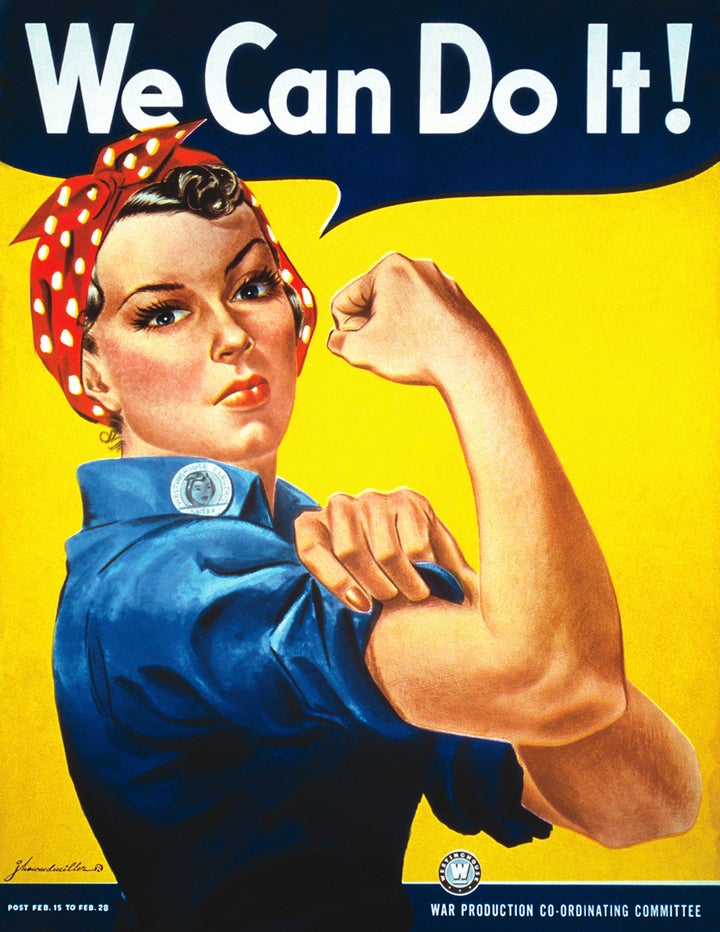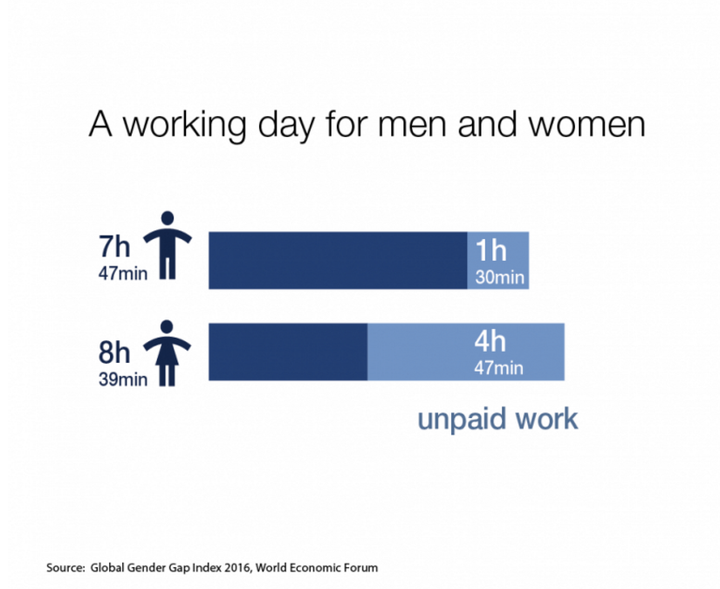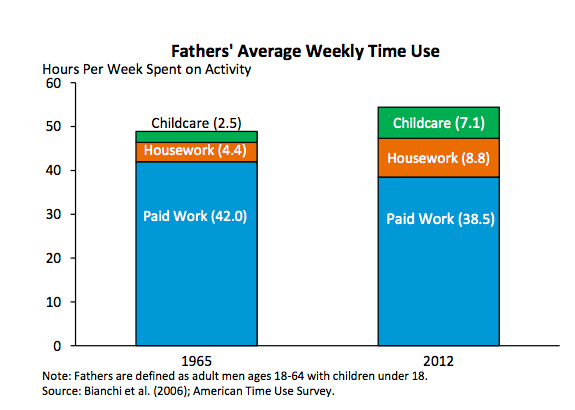
Women make less money than men, even though they work 39 more days per year, according to a global report on gender equality the World Economic Forum released Wednesday.
The analysis, which uses data from 33 Organization for Economic Co-operation and Development countries ― including the United States, much of Europe, Nordic countries and nations in South America and Asia ― might seem odd at first.
You’d think that women would work less than men. After all, more men than women are employed around the world. Eighty-eight percent of men ages 25 to 54 are part of the labor force in the U.S., versus 73 percent of women. And in our prime working years, when incomes really start to peak between age 35 to 44, the numbers spread out even further: 90 percent of men, compared to 74 percent of women.
Men also outearn women. Women in the U.S. earn 80 cents for every dollar a man makes. Women around the world earn an average of $11,000 a year, compared to $20,000 for men, according to the new report.
The thing is, the OECD data considers unpaid work ― the truly critical labor that must happen in order for societies to function: child-rearing, cleaning, cooking, caring for the elderly.
“It is simply valuable work because it is a lot of what it means to be human,” Saadia Zahidi, the head of employment and gender initiatives at the World Economic Forum.
Women do an outsized share of this work ― and it’s holding back gender equality and economies around the world.

Politicians talk about the importance of unpaid labor in the U.S. ― family values and so on ― but our policies don’t reflect an understanding of its worth. We are one of a handful of countries, and the only advanced economy, that doesn’t mandate paid maternity leave, which forces women and men to make some truly painful choices in order to have children.
Our policies do not acknowledge the reality that most women work outside the home and most couples raising children must scrape and scramble to afford childcare and to care for the children while earning money.
The fact that so many women are pulling double shifts of unpaid and paid labor is painful for the entire economy: It means women choose to work fewer hours, take less demanding jobs or leave the workforce entirely ― which dings our economic growth and productivity and sucks talent and innovation out of the system.
If women around the world were able to work for the same pay as men, it would add $28 trillion to the global economy, one report estimated last year.
To be clear, the argument isn’t that no one should do that unpaid work. The argument is that to close gender equality gaps ― women are underrepresented in politics and in business and earn less money than men ― you have to address the issue of inequality in unpaid labor.
That, of course, means a more equal sharing of unpaid labor between men and women. That’s already happening frequently here in the U.S. ― many of us have egalitarian relationships, and men are taking on more work at home.

But that’s not enough. Policies need to be put in place that support unpaid laborers. That means paid parental leave. That means a child-care and elder-care structure that supports workers. A school system that acknowledges parents work well past the time the school day ends. Paid sick leave, so that you don’t lose money by staying home when your kid has the flu.
Those policies would enable more parents to work and earn more money, but they’d also create more jobs: We’d need more professional caretakers.
“These are large job creators,” Zahidi said. The countries with the smallest gender gaps are getting a lot of this right.
The U.S. comes in at No. 45 on the World Economic Forum’s ranking of countries with the smallest gender gaps. The group looked at education, health, economic opportunity and political empowerment.
The second-place country, Finland, has an extremely generous parental leave policy that helps keep women in the labor force and incentivizes men to pick up more work at home.
The government of the top-ranked country, Iceland, has exhibited a passionate devotion to women’s equality, even promising to close its gender pay gap by 2022 ― one-third of the country’s women belong to a gender issue Facebook group, The Guardian notes.
Here at home, Democratic presidential nominee Hillary Clinton has proposed a number of policies ― subsidized child care, paid parental leave ― that could bring us closer to the top of the list. And, notably, even her opponent has proposed a maternity leave policy ― signaling that more people across party lines are starting to recognize there’s a need.
Regardless of whether these kinds of laws come to fruition in the next few years will tell you a lot about what Americans truly value.
